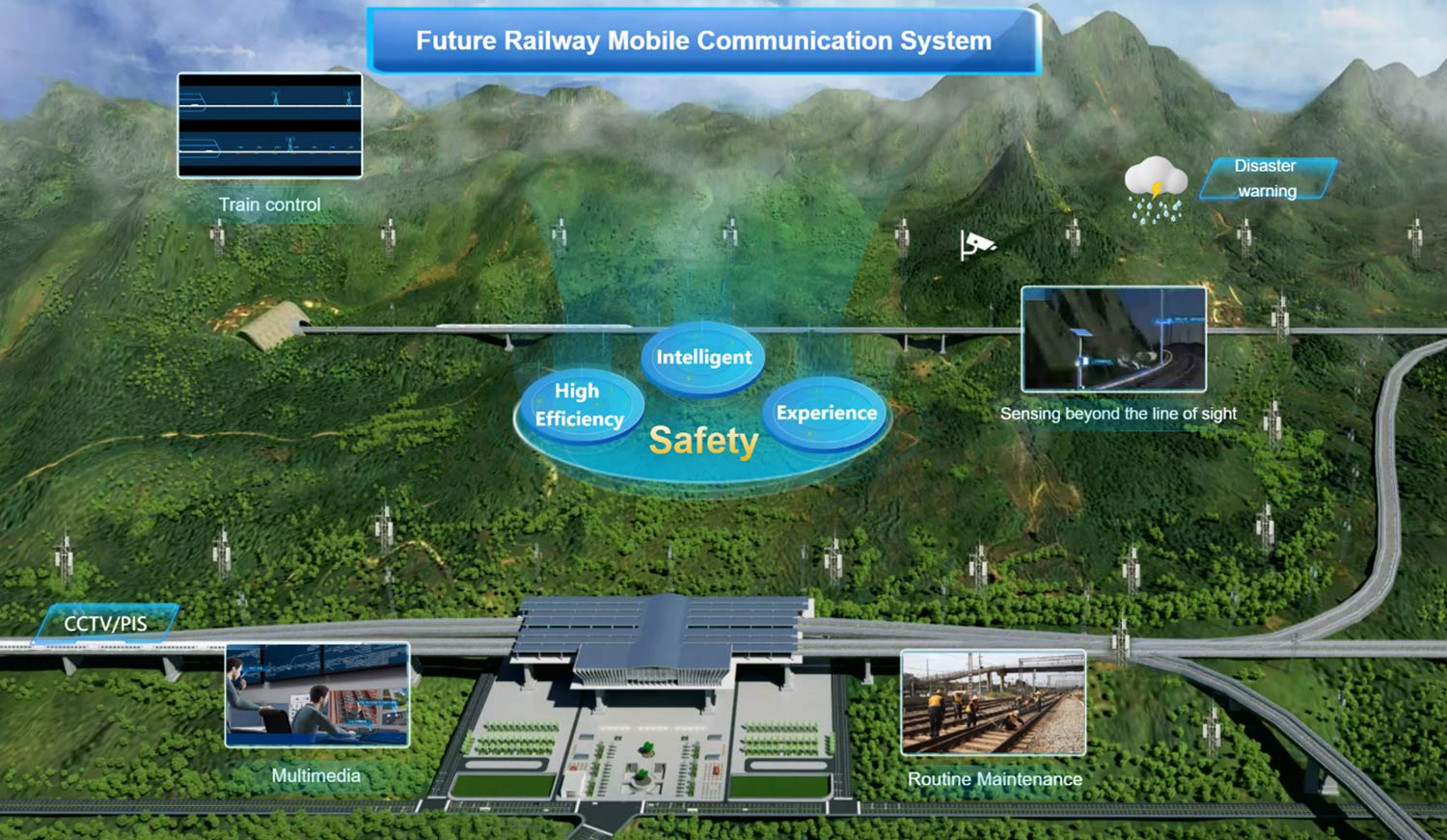
There should be absolutely no doubt that digital technology has the potential to fundamentally transform the railway sector across Southern Africa. And to be competitive at a global level, it’s vital that sector players work with technology providers to adopt these technologies in a way that is effective and sustainable.
Operators and infrastructure managers need to adopt new technologies that can support greater numbers of higher speed trains, safely reduce the spacing between trains and add to interoperation and connectivity across borders. Of urgency is the need to shift from the global system for mobile communications – rail (GSM-R), which has served as the radio communication in the rail industry for over two decades. With the rapid advancement of technology, however, GSM-R is approaching obsolescence, necessitating the development of a new and modern standard: Future Railway Mobile Communication System (FRMCS) based on 3GPP standards.
The transition to FRMCS as the unified operating communication technology of the Southern African Development Community (SADC) will support the increased operational efficiency of its logistic network and obviously reduce duplicate investment.
At the recent Southern African Railway’s Association’s (Sara) annual conference, its president, Agostinho Francisco Langa Júnior, noted that FRMCS was pivotal for genuine digital transformation to promote regional trade with a seamless, predictable and cost-effective railway system across the region.
With features such as high reliability, low latency and large bandwidth, FRMCS is set to transform ground-to-train communications, providing enhanced safety, efficiency and data transmission rates compared to its predecessor, meeting the requirements of future service scenarios.
Combining FRMCS with the newly assigned TDD 1.9GHz spectrum could help customers achieve quick commercial deployment of the new system, allowing them to accelerate the digital transformation of the industry based on the mature industry ecosystem of 3GPP standards. It’s also worth noting that the shift can be implemented holistically as the FRMCS could be seamlessly integrated with the existing GSM-R system.
Other advantages
FRMCS offers several other advantages over GSM-R, too. Unlike its narrowband predecessor, FRMCS is a broadband solution, meaning that it can support real-time transmission of large amounts of information such as acceleration and driving status. This allows more traffic data to be transmitted, and intervals between trains to be reduced, increasing overall capacity on networks. When trains get too close, warning information is easily transmitted between trains and the dispatch centres to ensure safety.
Another advantage of the high bandwidths FRMCS offers is support for super-distance video warning. This utilises AI and edge computing to identify intrusions onto the tracks, such as rock or tree falls, providing advance warning to oncoming high-speed trains and allowing them enough time to slow down. Trackside sensors can also be used to detect abnormal weather events and transmit real-time data to drivers and control centres.
The high bandwidth solution provided by FRMCS additionally supports simultaneous video and voice transmission at command centres. This means customers do not have to prioritise feeds – it allows fast onsite information gathering and efficient and accurate command and control of networks.
Another strength of FRMCS is its system architecture. Unlike GSM-R, FRMCS adopts a three-strata architecture, consisting of the application, service and transport. This new architecture facilitates the expansion of railway applications (such as management visualisation, predictive maintenance, intrusion alarm, precise positioning, digital map and disaster alarm) as needed. In addition, this decoupled architecture allows railway operators to choose 4G or 5G for the transport stratum based on their service requirements and business/ecosystem maturity.
 At Huawei, we are of course aware that replacing GSM-R comes with several challenges, including regional FRMCS practice standards and guidelines, migration design to FRMCS from various legacy technologies, and collaboration between railway owners. Sara and Huawei both note, however, that the development of FRMCS standards and the involvement of industry organisations and stakeholders are addressing these challenges, and the technology solution is ready, but the accelerating deployment would need more effort from echo stakeholders.
At Huawei, we are of course aware that replacing GSM-R comes with several challenges, including regional FRMCS practice standards and guidelines, migration design to FRMCS from various legacy technologies, and collaboration between railway owners. Sara and Huawei both note, however, that the development of FRMCS standards and the involvement of industry organisations and stakeholders are addressing these challenges, and the technology solution is ready, but the accelerating deployment would need more effort from echo stakeholders.
Fortunately, Huawei has been at the forefront of FRMCS deployment, with multiple use cases already implemented worldwide. We are also actively working with industry partners to study the application of 4G/5G wireless broadband technologies in the railway industry.
In addition, we promote the standard and ecosystem of high-power terminals, which effectively improves the coverage of base stations and reduces customer network investment. At this stage, we are willing to work with all stakeholders to explore the commercial deployment of FRMCS to accelerate the digital transformation of railway communications. Huawei believes One FRMCS tech would be the best choice to make one unified SADC rail network, and that one SADC rail is the only path to build a unified Southern Africa Development Community market.
With increased safety, efficiency and data transmission rates, FRMCS will pave the way for the digitalisation of railways, supporting advanced technologies such as automatic train operation and train control systems. Collaboration among industry players, integrated into the global ecosphere will be key to ensuring the successful commercial deployment of this transformative communication technology.
About Huawei
Huawei is a leading global provider of ICT infrastructure and smart devices. With integrated solutions across four key domains – telecommunications networks, IT, smart devices and cloud services – we are committed to bringing digital to every person, home and organisation for a fully connected, intelligent world.
Huawei’s end-to-end portfolio of products, solutions and services are both competitive and secure. Through open collaboration with ecosystem partners, we create lasting value for our customers, working to empower people, enrich home life and inspire innovation in organisations of all shapes and sizes.
At Huawei, innovation focuses on customer needs. We invest heavily in basic research, concentrating on technological breakthroughs that drive the world forward. By 31 December 2022, Huawei had 207 000 employees, more than 114 000 of whom are research and development employees (55.4%). We operate in more than 170 countries and regions, serving more than three billion people worldwide.
In 2022, through the efforts of all employees, the company achieved an estimated annual sales revenue of CY636-billion, aligned with forecast. Founded in 1987, Huawei is a private company fully owned by its employees.
For more information, please visit Huawei online at www.huawei.com or follow us on X, Facebook, LinkedIn or YouTube.
- The author, Li Mingqun, is Huawei sub-Saharan Africa Transportation Business MD
- Read more articles by Huawei on TechCentral
- This promoted content was paid for by the party concerned

